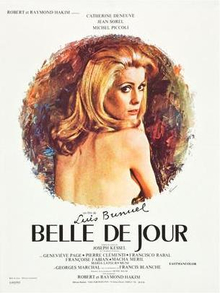A blog formerly known as Bookishness / By Charles Matthews
"Dazzled by so many and such marvelous inventions, the people of Macondo ... became indignant over the living images that the prosperous merchant Bruno Crespi projected in the theater with the lion-head ticket windows, for a character who had died and was buried in one film and for whose misfortune tears had been shed would reappear alive and transformed into an Arab in the next one. The audience, who had paid two cents apiece to share the difficulties of the actors, would not tolerate that outlandish fraud and they broke up the seats. The mayor, at the urging of Bruno Crespi, explained in a proclamation that the cinema was a machine of illusions that did not merit the emotional outbursts of the audience. With that discouraging explanation many ... decided not to return to the movies, considering that they already had too many troubles of their own to weep over the acted-out misfortunes of imaginary beings."--Gabriel García Márquez, One Hundred Years of Solitude
Wednesday, October 19, 2016
Belle de Jour (Luis Buñuel, 1967)
Belle de Jour is a famously enigmatic film, venturing into (and often blurring) the space between reality and fantasy, between waking life and dreams. It has led a lot of people astray, into questions like: What's buzzing in the Asian client's box that so frightens the other prostitutes in the brothel, but so satisfies Séverine (Catherine Deneuve)? Why does Séverine so often hear cats meowing? What is the Duke (Georges Marchal) doing that so shakes the coffin in which he has posed Séverine and causes her to flee into the rain? Why is Pierre (Jean Sorel) so fascinated by the wheelchair that foreshadows his fate? How much of any of this is meant to be reality? Critics have been more or less preoccupied by these and other matters of speculation and interpretation for almost 50 years. But I, for one, am content to invoke Keats's "negative capability," which he defined as the ability of an artist to be "in uncertainties, mysteries, doubts, without any irritable reaching after fact and reason." Of course, it would be abrogating the critics' responsibility if they failed to pursue the aesthetic and moral effects of the enigmas introduced into the film by Luis Buñuel and screenwriter Jean-Claude Carrière. I'm arguing that their effect is collective and cumulative, that pursuing any one of these details in search of a definitive answer is like concentrating on the threads at the expense of seeing the tapestry. Belle de Jour is subject to all forms of analysis -- Freudian, Jungian, Lacanian, Marxist, feminist, you name it -- but without exhausting its possibilities to tantalize. I think Buñuel's major achievement in the film is in sticking to his roots in surrealism without resorting to surrealist clichés: Every scene, even the obvious fantasies like the one in which Séverine is pelted with muck by Pierre and Husson (Michel Piccoli), is grounded in actuality, down to the specific address and the mundane Parisian location given to the brothel run by Madame Anaïs (Geneviève Page). It's only in reflecting on the film that we begin to question which scenes are "real" and which aren't. Belle de Jour is one of those inexhaustible films that you revisit with the certain knowledge that it will look slightly different to you every time.
Links:
Belle de Jour,
Catherine Deneuve,
Geneviève Page,
Georges Marchal,
Jean Sorel,
Jean-Claude Carrière,
Luis Buñuel,
Michel Piccoli
Subscribe to:
Posts (Atom)
